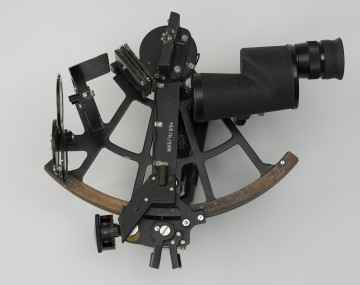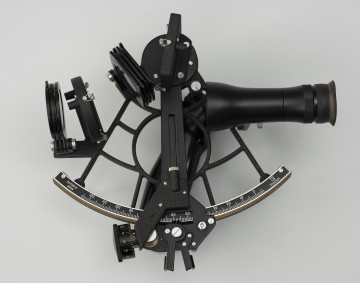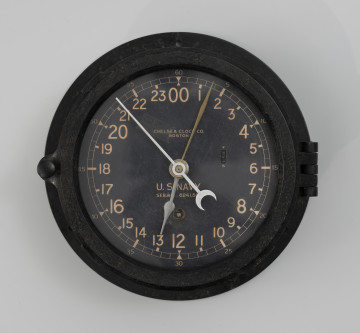
Tamaya sextant
1960 — 1970
National Museum in Szczecin
Part of the collection: Navigation history
Invented by John Hadley (1682-1744), a British mathematician and inventor in 1731, the sextant remains essentially unchanged in its design to this day. This navigational instrument of a rather complex nature is used to measure the angular distance between two observable points. Its primary task in astronavigation is to measure the angle between the observed celestial body and the horizon, which, together with the time of measurement, is used to determine position lines on nautical and aeronautical charts. A sextant can be used to measure the height of a landmark and, based on this information, determine its own distance from it. However, in the horizontal position, it would serve to determine angles between objects located on maps, and the combination of angles between at least three such points will make it possible to determine the ship's position in relation to these points. SNO - Nautical Sextant with Illumination - Tropical. It was designed for the Soviet Navy replacing the SNO-M model. While the SNO-M was a copy of the World War II CPlath sextant, the SNO-T was not only a modified but also an improved version of the early Trommelsextant manufactured by Freiberger Präzisionsmechanik GmbH (1771- ). The SNO - T additionally had magnifying glass illumination and was adapted to the harsh tropical conditions. The piece is considered to be one of the most accurate sextants in the world. It was manufactured in the Soviet Union, probably in Leningrad, around 1976. Leszek Kocela
Author / creator
Object type
sextant, box, accessory, certificate
Technique
batch production
Material
metal, glass, mirror
Origin / acquisition method
purchase
Creation time / dating
Creation / finding place
Owner
Muzeum Narodowe w Szczecinie
Identification number
Location / status

1960 — 1970
National Museum in Szczecin

1983-02-28
National Museum in Szczecin

1941 — 1945
National Museum in Szczecin
DISCOVER this TOPIC
National Museum in Szczecin
DISCOVER this PATH
Educational path